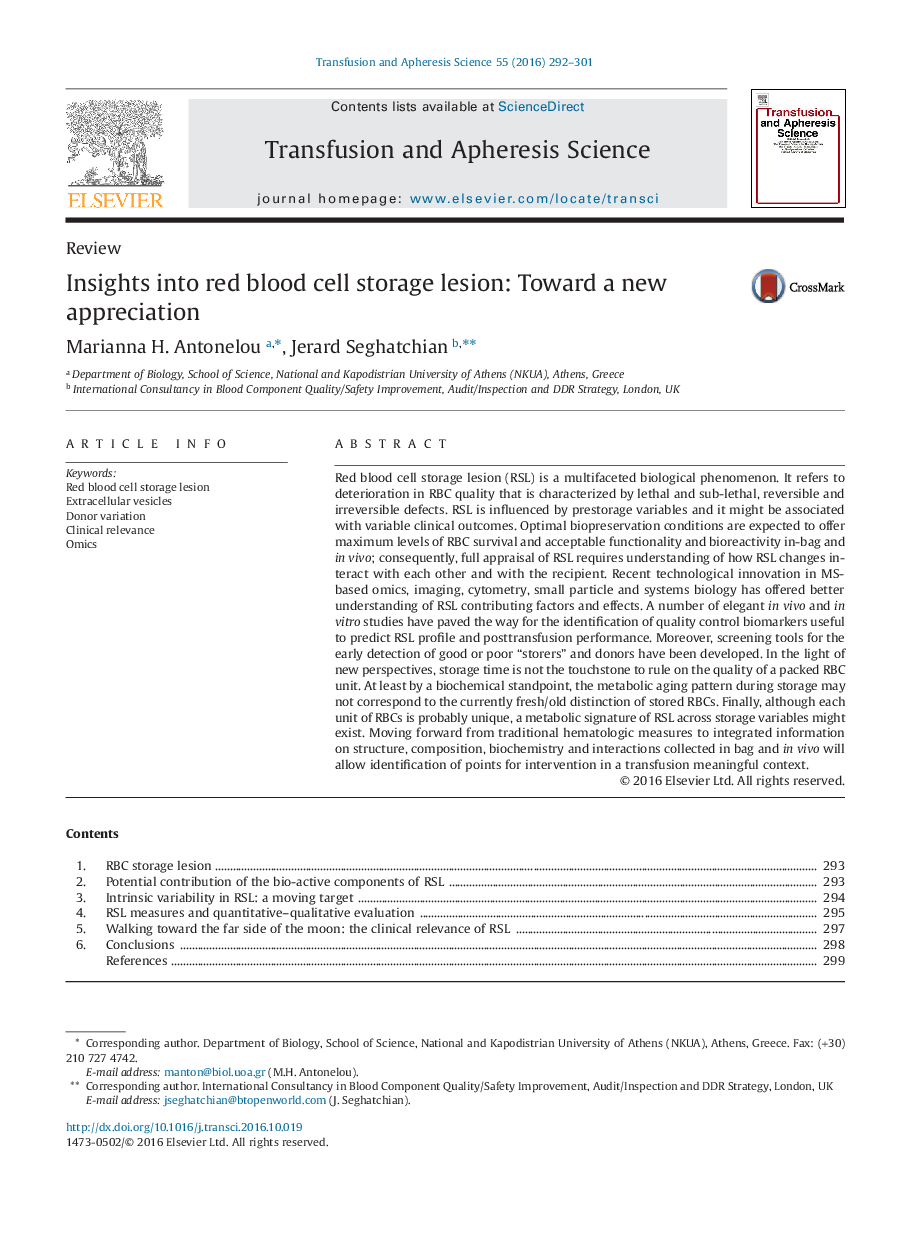| Article ID | Journal | Published Year | Pages | File Type |
|---|---|---|---|---|
| 5664679 | Transfusion and Apheresis Science | 2016 | 10 Pages |
Red blood cell storage lesion (RSL) is a multifaceted biological phenomenon. It refers to deterioration in RBC quality that is characterized by lethal and sub-lethal, reversible and irreversible defects. RSL is influenced by prestorage variables and it might be associated with variable clinical outcomes. Optimal biopreservation conditions are expected to offer maximum levels of RBC survival and acceptable functionality and bioreactivity in-bag and in vivo; consequently, full appraisal of RSL requires understanding of how RSL changes interact with each other and with the recipient. Recent technological innovation in MS-based omics, imaging, cytometry, small particle and systems biology has offered better understanding of RSL contributing factors and effects. A number of elegant in vivo and in vitro studies have paved the way for the identification of quality control biomarkers useful to predict RSL profile and posttransfusion performance. Moreover, screening tools for the early detection of good or poor “storers” and donors have been developed. In the light of new perspectives, storage time is not the touchstone to rule on the quality of a packed RBC unit. At least by a biochemical standpoint, the metabolic aging pattern during storage may not correspond to the currently fresh/old distinction of stored RBCs. Finally, although each unit of RBCs is probably unique, a metabolic signature of RSL across storage variables might exist. Moving forward from traditional hematologic measures to integrated information on structure, composition, biochemistry and interactions collected in bag and in vivo will allow identification of points for intervention in a transfusion meaningful context.
